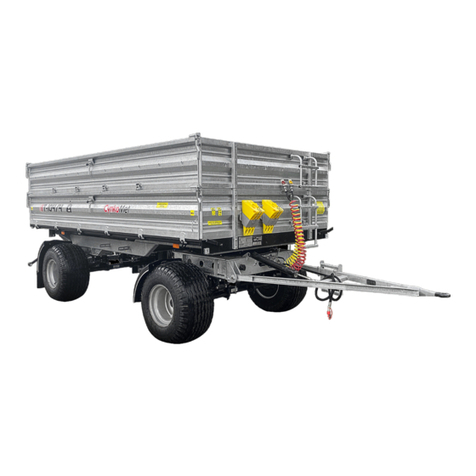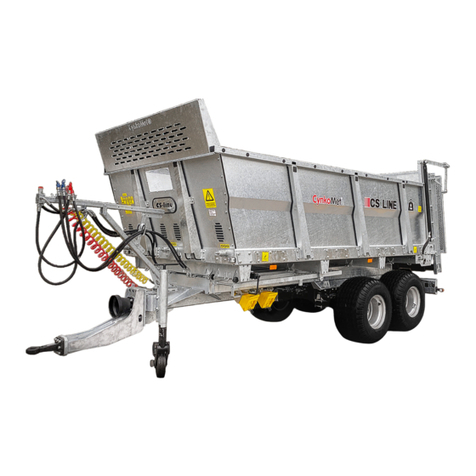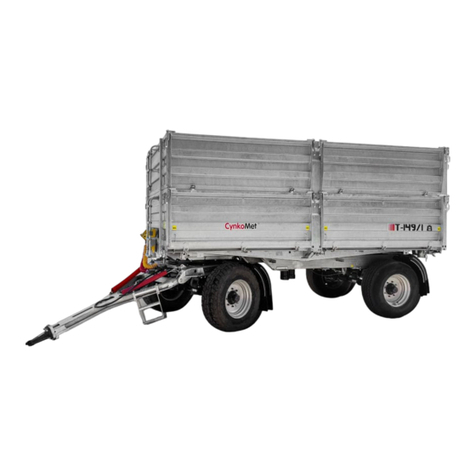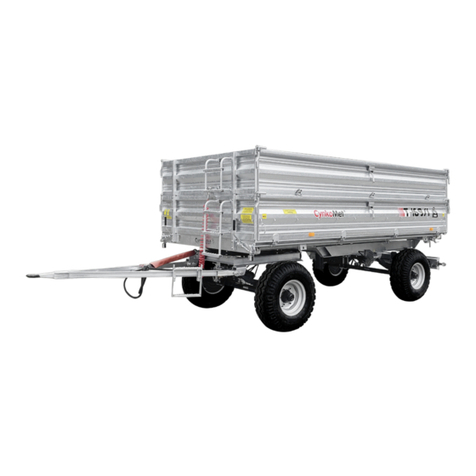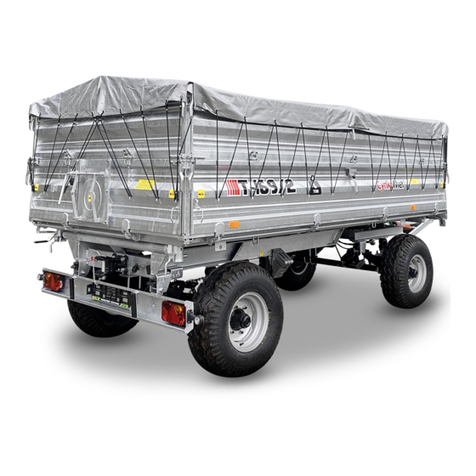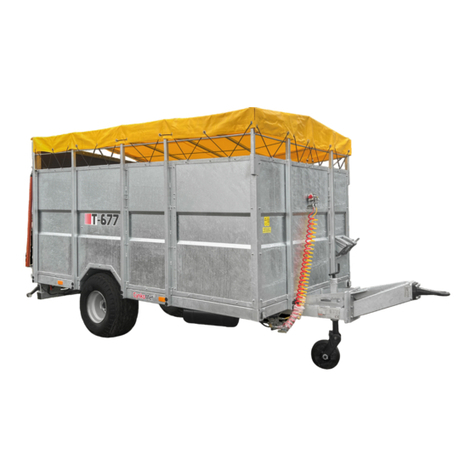CynkoMet T-117
Page 5
Table of contents
1. Introduction ..................................................................................................... 7
1.1 Identification of the machine .................................................................................................. 8
2. Purpose of the trailer....................................................................................... 9
3. Safety in use................................................................................................... 12
3.1 General safety and accident prevention regulations...................................................... 12
3.2 Attaching and detaching the machine to the tractor..................................................... 14
3.3 Road wheels .............................................................................................................................. 15
3.4 The pneumatic and hydraulic system................................................................................. 15
3.5 Maintenance.............................................................................................................................. 17
3.6 The principles of movement on public roads................................................................... 17
3.7 Description of residual risk. ...................................................................................................20
3.8 Residual risk assessment. ....................................................................................................... 21
3.9 Information and warning stickers. .......................................................................................22
4. Information regarding use............................................................................. 26
4.1 Technical characteristics.........................................................................................................26
4.2Description of construction and operation.......................................................................28
4.2.1 Chassis ............................................................................................................................. 28
4.2.2 Loading crate ................................................................................................................ 30
4.2.3 The hydraulic installation of the lift ......................................................................... 32
4.2.4 Brake system ................................................................................................................. 34
4.2.5 Electrical installation, lighting and signaling.................................................................... 38
4.3 Rules of proper use of trailers. ..............................................................................................40
4.3.1 Preparation before running for the first time........................................................ 40
4.3.1.1 Control of the trailer after delivery........................................................................ 40
4.3.1.2 Preparation of the trailer for the first connection. ............................................ 40
4.3.2 Preparation for work. .................................................................................................. 43






